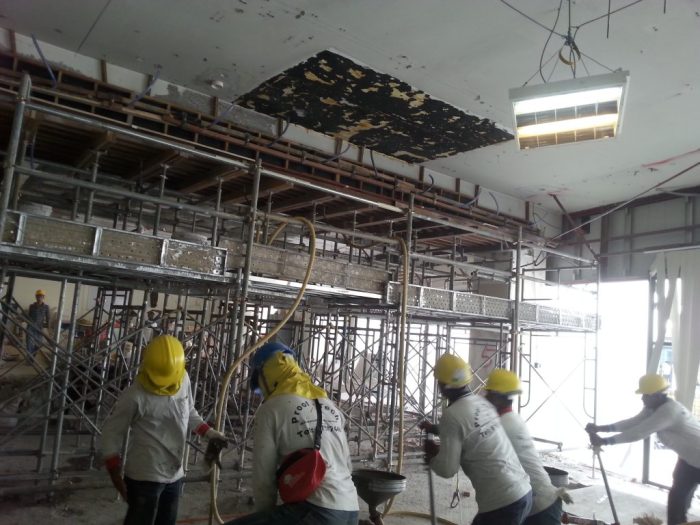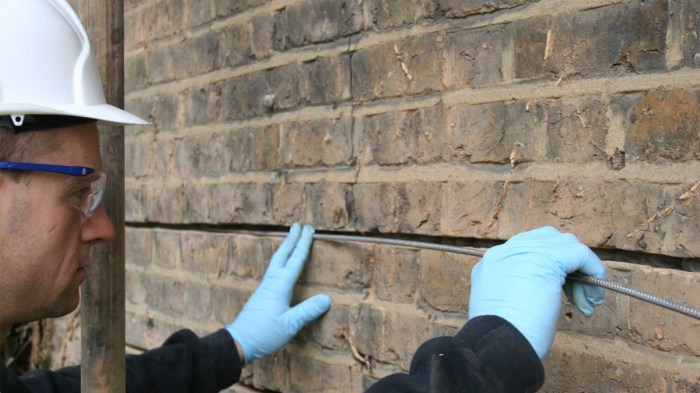Exploring Structural Repair Contractors: A Comprehensive Guide
Diving into the world of structural repair contractors, this guide offers a detailed look at their role, qualifications, common issues they tackle, repair techniques, safety measures, and more. Whether you're a homeowner facing foundation cracks or a construction professional seeking expert help, this overview will provide valuable insights.
As we navigate through the intricacies of structural repair contractors, you'll gain a deeper understanding of their crucial role in maintaining the integrity of buildings and structures.
Introduction to Structural Repair Contractors
Structural repair contractors play a crucial role in the construction industry by specializing in the restoration and repair of various structural elements of buildings and infrastructure. Their expertise is essential in ensuring the safety, stability, and longevity of structures.
It is important to hire qualified structural repair contractors to guarantee that the repair work is done correctly and meets the necessary standards and regulations. Their knowledge and experience are crucial in identifying the root cause of structural issues and implementing effective solutions to address them.
Typical Services Offered by Structural Repair Contractors
- Foundation Repair: Structural repair contractors are skilled in addressing foundation issues such as cracks, settling, and water damage.
- Concrete Restoration: They specialize in repairing and restoring concrete elements such as walls, columns, and beams.
- Structural Strengthening: Contractors can enhance the strength and stability of structures through techniques like carbon fiber reinforcement and steel bracing.
- Waterproofing: They provide waterproofing solutions to prevent water infiltration and damage to the structure.
- Masonry Repair: Contractors are proficient in repairing and restoring masonry elements like brickwork and stone facades.
Qualifications and Certifications
To work as a structural repair contractor, individuals must possess specific qualifications and certifications to ensure they have the necessary skills and knowledge to perform the job effectively. These qualifications and certifications play a crucial role in maintaining the quality and safety of structural repair work.
Necessary Qualifications and Certifications
- Education: Most structural repair contractors have a degree in civil engineering or a related field to understand the principles of structural design and construction.
- Experience: Hands-on experience in construction or repair work is essential to develop practical skills in assessing and fixing structural issues.
- Licenses: Contractors must hold a valid license to operate legally and demonstrate their competence in structural repair.
Significance of Certifications
Certifications such as the American Concrete Institute (ACI), International Code Council (ICC), or American Welding Society (AWS) are highly valued in the field of structural repair. These certifications signify that the contractor has undergone rigorous training and testing to meet industry standards and best practices.
Impact of Qualifications on Work Quality
Having the right qualifications and certifications can significantly impact the quality of structural repair work. Contractors with proper training and credentials are more likely to identify issues accurately, propose effective solutions, and execute repairs with precision. This ensures that the structural integrity of buildings is maintained and the safety of occupants is not compromised.
Common Structural Issues
Structural issues in buildings can arise due to various reasons, requiring the expertise of repair contractors to address them effectively.
Foundation Cracks
Foundation cracks are a common structural problem that can be caused by factors such as soil movement, poor construction practices, or water damage. These cracks can compromise the stability of the entire structure and require professional repair to prevent further damage.
Sagging Floors
Sagging floors are often a result of weakened support beams, improper foundation settling, or water damage. This issue not only affects the aesthetics of the building but also poses safety risks. Structural repair contractors are needed to assess the extent of the damage and implement the necessary repairs.
Wall Bowing
Wall bowing occurs when external pressure causes the walls to curve or bulge inward. This can be due to issues like expansive soil, poor drainage, or inadequate wall reinforcement. Structural repair contractors have the expertise to correct wall bowing and prevent further structural damage.
Examples of Projects
- Repairing foundation cracks in a residential home to prevent further structural damage.
- Fixing sagging floors in a commercial building to ensure the safety of occupants.
- Addressing wall bowing in a historical structure to preserve its integrity.
Repair Techniques and Solutions
When it comes to structural repair, contractors utilize a variety of techniques and solutions to address different issues. These methods can range from traditional approaches to more modern and innovative solutions, depending on the specific needs of the structure
Carbon Fiber Reinforcement
Carbon fiber reinforcement is a popular technique used to strengthen and repair concrete structures. This method involves applying layers of carbon fiber sheets to the surface of the structure and then bonding them with a high-strength epoxy resin. The carbon fiber reinforcement provides added strength and durability to the structure, making it more resistant to cracking and other forms of damage.
Underpinning
Underpinning is another common repair technique used by structural repair contractors to stabilize and strengthen the foundation of a building. This method involves excavating soil from beneath the foundation and then reinforcing it with concrete or steel piers. Underpinning helps to redistribute the weight of the structure and prevent further settlement or movement.
Epoxy Injections
Epoxy injections are a modern solution often used to repair cracks in concrete structures. This technique involves injecting a high-strength epoxy resin into the cracks, which then hardens and bonds with the surrounding concrete to create a seamless repair. Epoxy injections are effective for repairing both structural and non-structural cracks, providing a durable and long-lasting solution.
Helical Piers
Helical piers are a type of foundation repair solution that is used to stabilize and support structures that are experiencing foundation settlement. These piers are screwed into the ground beneath the foundation, providing additional support and preventing further movement. Helical piers are a cost-effective and efficient solution for addressing foundation issues in both residential and commercial buildings.
Safety Measures and Regulations

Structural repair contractors prioritize safety on job sites to protect both their workers and the occupants of the building. They adhere to strict safety protocols to minimize risks and ensure a secure working environment.
Safety Protocols Followed
- Contractors conduct thorough safety inspections before starting any repair work to identify potential hazards.
- All workers are required to wear appropriate personal protective equipment (PPE) such as hard hats, gloves, and safety goggles.
- Regular safety training and toolbox talks are conducted to educate workers on safe practices and emergency procedures.
- Proper signage, barriers, and fall protection measures are implemented on-site to prevent accidents and injuries.
Importance of Compliance with Building Codes
Compliance with building codes and regulations is crucial in structural repair work to ensure that the repairs are done correctly and meet safety standards. Failure to comply can result in serious consequences such as fines, legal liabilities, and compromised structural integrity.
Risks and Mitigation Strategies
- Common risks in structural repair projects include collapses, falls, electrical hazards, and exposure to harmful substances like asbestos.
- Contractors mitigate these risks by conducting thorough risk assessments, implementing safety controls, and providing proper training to their workers.
- Regular inspections and quality checks are carried out to ensure that the repair work is done according to regulations and industry standards.
Conclusion

In conclusion, structural repair contractors play a vital role in ensuring the safety and stability of various structures. By adhering to rigorous qualifications, utilizing advanced repair techniques, and prioritizing safety measures, these professionals uphold industry standards and deliver reliable solutions for any structural issues.
FAQ Guide
What qualifications are needed to become a structural repair contractor?
To become a structural repair contractor, individuals typically need certifications such as ACI, ICC, or AWS, along with relevant experience in construction and repair work.
What are some common structural issues that require the expertise of repair contractors?
Common structural problems include foundation cracks, sagging floors, and wall bowing, which necessitate the specialized skills of repair contractors to address effectively.
How do structural repair contractors ensure safety on job sites?
Structural repair contractors follow strict safety protocols, comply with building codes, and mitigate risks associated with structural repair projects to ensure a safe working environment.




